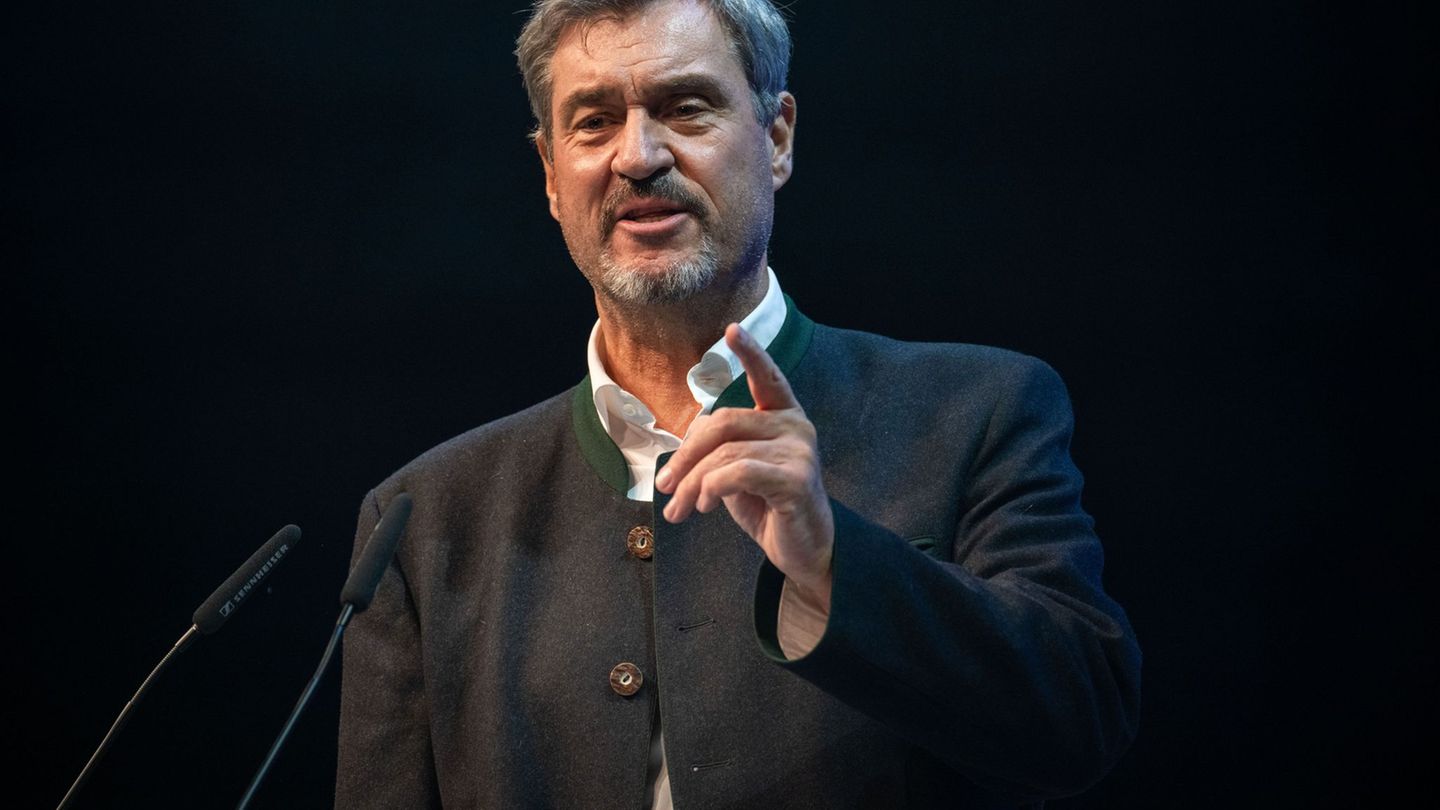In the event of imminent power outages, network operators should be allowed to dim the electricity purchased from a wall box, for example. To prevent this, there should be price incentives for consumers.
The local power grids are not yet designed for masses of electric cars and heat pumps – so grid operators should be allowed to temporarily throttle power purchases to prevent power outages. For consumers, this means, for example: It takes longer to charge an electric car. A new concept presented by the Federal Network Agency on Friday also provides that consumers should be given the opportunity to save money via “variable network charges”.
Networks not yet sufficiently developed
Electricity consumption in Germany will increase significantly in the coming years. Because in the transport sector, millions of e-cars should help to achieve climate goals. Millions of heat pumps are to be installed in houses – as part of the heat transition, which has been in the headlines for months due to the heating law.
So-called controllable consumption devices such as private charging devices for e-cars and heat pumps have a higher output than most normal household appliances, as Klaus Müller, President of the Federal Network Agency, said. They also often need more electricity at the same time. However, the majority of the low-voltage grids are not yet designed for this.
According to a new version of the Energy Industry Act, the Federal Network Agency can make regulations for so-called “network-oriented control”. The authority published a key points paper last autumn, which was heavily criticized by associations – associations feared “comfort losses” when charging electric cars, for example.
Müller has now presented a revised draft that associations can comment on. By autumn, the authority wants to make a definitive decision as to which requirements will apply from 2024 onwards. “If we don’t act, there is a risk of a scenario in which heat pumps and charging devices for e-cars may only be connected with a delay or even have to be switched off more frequently to ensure grid stability,” said Müller. This would be conceivable, for example, if many people with e-cars came home at a certain time on weekdays and wanted to charge the car.
How to prevent network congestion
The Federal Network Agency sticks to its baseline. Grid operators will no longer be allowed to refuse or delay the connection of new systems with reference to a possible local overload of their grid. In return, however, if there is an acute threat or overloading of the network, the network operator should temporarily dim the electricity supply from controllable consumption devices, said Müller: “Only dimming.” It’s not about complete shutdowns. “We assume that interventions by the network operator will remain the mandatory exception,” said Müller. “They are only permissible as a last resort and should only be possible to the extent that it is technically necessary.”
What dimming means
According to a first draft by the Federal Network Agency, wall boxes, for example, could have been throttled down to an output of 3.7 kilowatts. That had caused criticism. According to the new proposals, it should now be ensured that at least 4.2 kilowatts are available, according to the Federal Network Agency. “This means that heat pumps can continue to be operated and e-cars can usually be recharged for a distance of 50 kilometers in two hours.”
The Federal Association of Energy and Water Management (BDEW) pointed out that it is about a short-term dimming of the electricity supply at a defined point, such as the wall box. “The e-car can charge less quickly for a certain time, but it continues to charge. The household itself remains unaffected: the refrigerator, washing machine and Internet continue to work as before.” The Stadtwerkeverband VKU called the controllability in case of need urgently necessary. Managing Director Ingbert Liebing said: “This gives us time to efficiently convert and expand the power grids in parallel with the ramp-up of heat pumps and electromobility.”
New incentives for consumers
The Federal Network Agency proposes entering into an incentive system for consumers who can shift their electricity purchases – consumers should therefore be rewarded if they charge their e-car when there is a lot of electricity in the grid. That could relieve the power grids. According to the Federal Network Agency’s plan, the network operator should offer the consumer a “time-variable network fee” as an option – in conjunction with a flat-rate discount. According to the authorities, this can be between 110 and 190 euros per year, depending on the grid area.
With the variable fees, the Federal Network Agency is responding to proposals from the Association of the Automotive Industry (VDA) and the Federal Association of Consumers. Several time windows are planned with three price levels for the locally applicable network charges. The time windows and price levels are to be determined on a calendar year basis. According to Müller, legal changes are not necessary
VDA President Hildegard Müller welcomed the concept: Without the additional introduction of time-variable network charges, there would have been a risk of too frequent direct control interventions by the network operator. “This danger for customer acceptance and thus for electromobility in Germany has been averted.”
BDEW General Manager Kerstin Andreae said that existing data could be used to identify time windows in which power consumption was particularly high or particularly low in recent years. “On this basis, the power grid operator can make the grid fees cheaper for certain time windows.” This creates an economic incentive to voluntarily shift part of the consumption from high-load times to low-load times. “For example, charging the electric car at 9 p.m. instead of 6 p.m..”
Source: Stern




